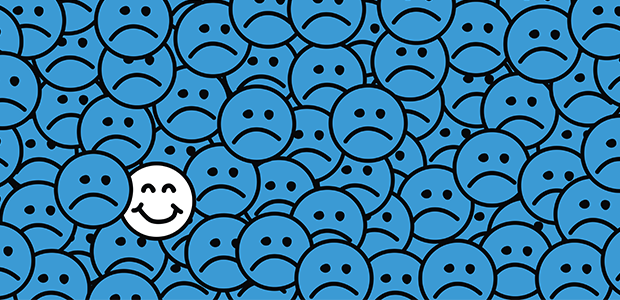
Blue Monday: Professionals think employers should be doing more for workforce wellbeing
A recent survey conducted by the international recruitment firm, Robert Walters, has revealed that that 55% of professionals believe their employers should intensify efforts in supporting employee wellbeing.
Interestingly, over two-fifths of senior leaders perceive their increased expenditure on wellness benefits as largely unnoticed. This poll, released on Blue Monday, the 15th of January, traditionally regarded as the most depressing day of the year, highlights the growing concern among UK & Ireland professionals regarding inadequate employer support in workplace wellbeing.
Blue Monday, a concept introduced in 2004 by a psychologist, symbolizes the culmination of post-holiday blues, unfulfilled New Year's resolutions, escalating financial stress, and bleak weather conditions. As this day invariably falls on a weekday, companies face increasing pressure to acknowledge and address their employees' mental health, irrespective of its work-relatedness.
Chris Poole, Managing Director of Robert Walters UK, remarked: “We are seeing that the onus has shifted in recent years, ‘it’s no longer what can I do for a company?’ – professionals are beginning to ask ‘how can my company help me?’”
“The rise in awareness in terms of employee wellbeing has not only caused employees to become more outspoken in terms of their own expectations in the workplace – but also shifted the spotlight onto employers, increasing expectations around what the leaders of companies should be doing to help their employees. Whilst budgets may be tight, 2024 is evidently not the year to turn a blind eye to money being spent on employee wellbeing.”
Research by WTW indicates that at the start of the year, over a third of companies (36%) planned to double their spending on employee wellbeing initiatives, despite economic instability and inflation concerns. Yet, a mere 11% of professionals feel that workplace wellbeing is prioritised by their employers, according to another Robert Walters poll. Moreover, an overwhelming 41% of employers admit their employees barely notice the new wellness initiatives implemented.
An alarming trend of 'wellbeing washing' is emerging among companies, where they outwardly promote wellbeing awareness and mental health causes, such as through social media or celebrating awareness days, without genuinely enhancing their workforce's wellbeing throughout the year. Claro Wellbeing found that although 70% of workplaces acknowledge mental health awareness days, less than half offer substantial mental health support.
Seventy percent of professionals now expect more from their employers (e.g., benefits, working culture, empathetic leadership & ESG contributions) compared to 18 months ago, with less than a fifth thinking otherwise. Over half (58%) of managers recognise their employees becoming more outspoken in the workplace in the last three years. The poll also discovered that nearly two-fifths (39%) of managers observe employees becoming more vocal in meeting their needs, with a further 26% noting employees taking proactive steps themselves. Popular methods for managing wellbeing include choosing in-office days (56%), setting personal work hours (24%), and pushing back on workload (10%).
Poole commented: “For professionals in an increasingly hybrid world, having autonomy in deciding the days they are in the office & setting their own work hours can help them avoid burnout – which right now, is enemy number one in terms of productivity and satisfaction levels.
“Whilst we are definitely seeing more of a push to return to the office, caution must be taken as to whether this is a positive or negative move for employees' mental health and work-life balance.”
Interestingly, over a quarter of employees have prioritised wellbeing in the past year, but almost two-fifths doubt their employers have done the same.
Poole further comments: “Upscaling wellbeing interventions can be as easy and inexpensive as flexible work arrangements, improving access to mental health resources, setting up mental health employee resource groups (ERGs), offering paid sabbaticals, or even adding plants or introducing more natural light into the workplace.”

